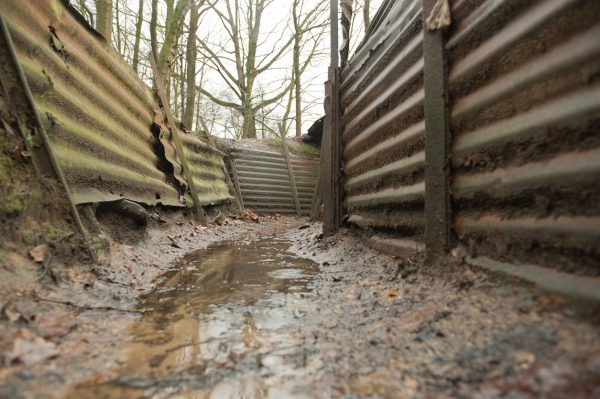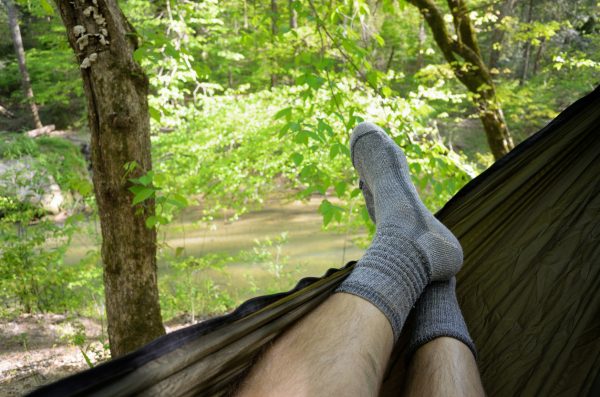How To Prevent Trench foot
When you’re unexpectedly stuck out in the wilderness, the comfort of your feet is likely the last thing on your mind. Food, water, shelter, warmth and getting home are the more pressing problems on your mind – or so you think.
But in reality, even in a survival situation, the health and comfort of our feet should be a priority. While staying alive is, indeed, critical in a survival situation, getting out relatively unscathed is important, too. Thus, preventing seemingly small injuries on your feet should be at the forefront of your mind, even when you’re more focused on trying to survive.
That being said, when we’re outside we usually neglect to take care of our feet. Hotspots, blisters, banged-up toenails, and salt rash are just some of the many problems that can plague our feet. Although these are the most common foot-related issues that we see in the backcountry, there is one that is worse than all the rest – trench foot.
What Is Trench Foot?
Trench foot gets its name from the trenches of World War I, where soldiers on both sides of the battlefield spent months and weeks at a time living in cold, wet, muddy fortified trenches as they hurled bullets and bombs at each other from hundreds of yards away. The warfare tactics of the day weren’t quite ready to deal with the advanced ammunition and weapons that were developed in the early part of the 20th century, so armies were stuck underground in fear of total annihilation at the hands of the enemy.

The disgusting conditions of the trenches combined with the relatively archaic medical care and knowledge of the early 20th century meant that soldiers routinely developed incredibly painful feet and systemic infections after prolonged periods of time at the front. The cause? Trench foot.
But what exactly is trench foot and what causes it?
Essentially, trench foot is the name of a non-freezing cold injury that results from the prolonged exposure of one’s feet to cold and wet conditions without sufficient drying time between periods of exposure.
Anyone who has ever taken a bath or spent too long in a pool has seen their feet turn white and wrinkly. Thankfully, after drying off and a half an hour or so outside the pool or bath, our feet usually go back to normal, and we can get on with our day.
For soldiers in the trenches, however, there was no time to dry one’s feet. Soldiers in World War II routinely wore the same wet socks and the same wet boots for days and weeks on end without taking the time to dry their feet out. This resulted in the same white, wrinkly skin that we’ve probably all experienced at some point in our lives, just 1000 times worse.
Imagine that same white, wrinkly skin after a few weeks in wet, muddy boots. They’re whiter and wrinklier than you could ever believe. After a long enough time without drying out, these feet will become super painful. The skin might even start sloughing off of the feet.
Once skin starts falling off of a foot with trench foot, bacteria and viruses can begin making their way in. At this point, the person with trench foot is incredibly susceptible to infection, which, if left untreated, can cause a widespread infection — leading to gangrene, amputation, or even death.
How To Prevent Trench Foot
If that lovely description of trench foot didn’t convince you to want to avoid it at all costs, then you should probably start reconsidering your priorities when it comes to your feet. If you do want to prevent trench foot in a survival situation, consider these tips:
- Keep at least one pair of socks dry at all times
This is, perhaps the most important thing you can do to prevent trench foot when you’re outside. While many people will bring a new pair of socks for every one or two days that they’re on a trip and put on a new pair every couple of mornings, you’d be better off wearing the same wet, dirty pair or two of socks during your hike and changing into a pair of clean, dry socks at night.
Why? Well, if your hiking socks are wet, chances are pretty high that your boots are wet too, or that you’ll be stepping into another stream at some point and getting them wet all over again. If you’re just going to get a nice pair of clean, dry socks all dirty, why even change your socks?

Instead, keep a pair of clean, dry socks in your sleeping bag at all times. Change into your dry socks every night before going to bed, and you’ll guarantee yourself at least a handful of hours of dry feet every day – the only known way to prevent getting trench foot.
- Bring camp shoes
If you’re like most campers, you hate having wet feet. As soon as your boots get wet, you’ll be walking around all day with a pair of heavy, squishy boots, and uncomfortably moist feet. If you bring a pair of camp shoes (Crocs are our favorite), then you can change into a pair of dry shoes once you get to camp.
Shoes like Crocs make a great pair of camp shoes because they’re close-toed, but they allow your feet to breathe and dry out when you’re not hiking, which is a great way to prevent trench foot.
- Inspect your feet every day
If you’re not in the habit of inspecting your feet every day while outdoors, you should be. It might sound weird, but even if your socks and feet are completely dry, you should take your socks off at least once, if not twice a day and have a good look at your feet. We recommend doing this before putting your boots on in the morning and upon arriving at camp in the evening.
Take this time to clean out any bits of lint from between your toes or to give your feet a quick wash to remove any salt that’s built up from your sweat. Inspect your feet for signs of hotspots or for any blisters that may have formed. This is a perfect time to treat and cover any blisters to help reduce the risk of infection.
Another Article From Us: What Made the Kentucky Rifle So Great?
Inspecting your feet at least once or twice a day will keep you up-to-date on your foot health throughout your time outside. Since trench foot develops when people ignore their feet for extended periods of time, inspecting your feet at least once or twice a day can help prevent trench foot, even if you’re traveling through wet and cold terrain.





